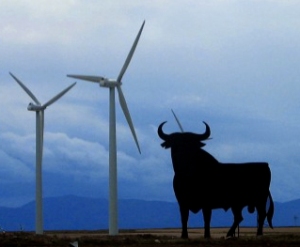Spain is facing a critical situation with pretty much every foreign investor in the energy sector running to investment arbitration to claim compensation for recent changes in the legal framework. Spain fully embraced Photovoltaic (PV) energy through the first half of the 2000s and by 2008 it was responsible for half of the world’s solar power facilities in terms of wattage. The FiT in Spain consisted of the implementation of a regime by which each kWh of electricity produced from renewable sources was paid to the producer at a special price – higher than the market one. In addition, renewable energy producers received preferential treatment and could sell all their electricity to the grid at the prices agreed. This system had its origins in the legislative framework for early renewable technologies instituted in the 1980s (Law 82/80 for Energy Conservation). Since then, a variety of instruments have been used to support the development of renewables, mainly legislative measures and financial support. The history of legislative initiatives is as follows. The renewable energy framework received a significant boost in 1997, through the Electric Power Act (Royal Decree 2818/1998), and in the mid 2000s with Royal Decree 436/2004. This reform was completed with the liberalisation of energy markets, considered to be one of the most significant innovations with effects on renewable energy generation (Royal Decree 436/2004), bringing market mechanisms to the field of energy production and distribution. The liberalisation of the sector however coincided (perhaps contrary to economic theory which pre-supposes a drop in prices after processes of de-monopolisation) with a strong rise in electricity prices. In order to ameliorate pressures on consumers, especially households, the Spanish system was revised in spring 2007 by the introduction of the Royal Decree 661/2007.
The reform described above came right before the general economic downturn caused by the banking crisis which hit Spain in 2008. The financial crisis, which began in 2007 and deepened in 2008, hastened the end of Spain’s expansive fiscal cycle and triggered a severe adjustment of the imbalances accumulated during the previous decade. It is generally agreed that the rapid deterioration of the international macroeconomic context highlighted the structural weaknesses of the Spanish economy, especially after 2008. Betting on a growth model heavily dependent on domestic demand, and more specifically on construction and property development activities, has proved to be (predictably one might argue) a failure. Despite the impression during the boom years that Spain was growing due to reform and openness to markets, the disproportionate growth in the real estate sector, coupled with the expansion of credit needed to finance it, lay at the basis of severe economic imbalances. The massive credit granting to construction and property development activities caused an excessive exposure of the banking industry to those sectors. This exposure was the means of transmission of the housing crisis to the banking sector, whose business was very constrained by the inadequate risk policy and the deficits of supervision of the pre-crisis period. While this crisis was one of private indebtedness, the state sector was not immune to its effects. Spanish sovereign debt went from 40% of GDP in 2007 to more than 100% of GDP in the first six months of 2013.
The financial downturn in late 2008 had major repercussions for Spain’s energy market. The pricing crisis in electricity was caused by the fact that Spain’s system capped end-user prices of electricity to several consumer groups under a regulated tariff system. With the generation costs rising faster than the tariff during the crisis years however, this system generated a huge tariff deficit that the government owed to utilities, estimated at billions of Euros already in May 2009. As a response, the government gradually reduced the eligibility for the tariff, and since the beginning of 2009 moved to revise (repeatedly) the whole tariff system to ensure costs are covered. Despite efforts at reform however, the government’s growing deficit in its energy budget had already reached around €4.5 billion by 2012. Considering Spain’s deteriorating fiscal position, due to support to the collapsing banking sector, the gradual removal of FiTs, cutting subsidies and capping the rate of return for investors, were the only fiscally viable options.
As the above presentation suggests, Spain’s regress from its commitment to support renewable energy generators did not stop with the 2007 Act. In November 2010, the Spanish government published Royal Decree 1565/2010, which limited the entitlement of solar photovoltaic plants to the incentive feed-in tariff (under Law 661/2007) to the first 25 years of operation, later extended to 30 years (Organic Law Complementing the Sustainable Economy Law of 4 March 2011). These new rules would probably result in lower project-life revenues for PV plants, which after the reform were limited to selling electricity on the spot market as of year 31 of operation, rather than benefiting from the (already reduced) incentive feed-in tariff that was provided for in Royal Decree 661/2007. In addition, in December 2010, the Spanish government published Royal Decree 14/2010 which imposed a production cap for solar generation, retroactively affecting existing PV plants. This latter law limited the maximum annual number of hours of operation on a regional scale for plants registered under Royal Decree 661/2007 and Royal Decree 1578/2008. Plants entitled to the particularly beneficial tariff under Royal Decree 661/2007 became subject to an even lower uniform cap from 1 January 2011 to 31 December 2014. These measures, which were finally approved by the Spanish parliament on 10 March 2011 after a turbulent legislative process, are blamed for jeopardising the financial viability of many existing PV projects because of their immediate financial impact.
The changes noted above show the extent to which the regulatory framework in Spain changed in just the space of a few years as regards renewables. Yet, notwithstanding the significant interventions already discussed, these were not the end in this list of regulatory changes. On 12 July 2013, the Spanish Council of Ministers approved a package of urgent legislative measures aimed at eliminating the apparently intractable Spanish electricity tariff deficit. On 13 July 2013, the Spanish Government approved Royal Decree 9/2013 which abolished entirely the special regime having its origins in the 2007 law and replaced it with a new remuneration system. As a consequence of the adoption of Royal Decree 15/2012 and Royal Decree 2/2014 Spain is now in a situation where the feed-in tariff system has been abolished. The last intervention to the legal framework to date, Royal Decree 413/2014, approved in June 2014, implemented the FiT cuts and provided guidelines on the calculation of solar PV project income. This is now to be assessed separately per project and is based on a series of parameters that take into account a plant’s ‘efficient operation.’ The parameters were established via a separate ministerial mandate in July 2014. The effect of this latest change is that renewables installations will receive the electricity market price plus ‘specific remuneration’, until they are capable of competing in the market. Under the new ‘specific remuneration’ scheme, renewable energy installations will be paid on the basis of their installed capacity and their exploitation costs and not by reference to their electricity production. The new remuneration scheme is intended to enable a ‘reasonable return’ which is calculated by reference to a ‘standard facility’. That is to say, the proposed remuneration is to be calculated as a market price differential. Such ‘reasonable return’ will be calculated by reference to the average yield of 10-year Spanish Government Bonds on the secondary market plus a spread. Finally, the new remuneration scheme will be backdated to 14 July 2013. Thus appropriate adjustments might be made on feed-in tariffs already received, giving rise to backdated collection rights or payment obligations for adversely affected companies.
It is understandable therefore that PV generation companies view the Spanish scheme, as it stands at the moment, as a significantly less attractive business proposition, compared to its original versions, including its 2007 incarnation. Spain’s FIT reductions already triggered significant asset impairments, which motivates investors in solar and wind energy to launch international arbitral proceedings to claim economic loss. To learn more about ISDS actions against Spain, click here.
@iGlinavos



This is a very well written-article! I’ve seen few pieces online that have truly canvassed the entire legislative mess that is the Spanish Solar Crisis. Thanks a lot.
LikeLike
Would it be possible to get a link for the ‘Solar Eclipse: Investment Treaty Arbitration and Spain’s Photovoltaic Trouble’ article? The full text doesn’t appear to be on SSRN.
LikeLike
Please email me at my institutional address and will send you a copy
LikeLike